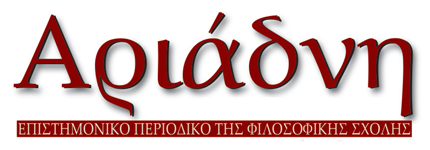H Αψίδα του Μεγάλου Κωνσταντίνου στη Ρώμη και η γενεαλογία της δυτικής παράδοσης: από τον Giorgio Vasari στον Alois Riegl
DOI:
https://doi.org/10.26248/ariadne.v0i25-26.1235Περίληψη
The present paper examines the origin of the term “late antiquity” which appears systematically in the historical studies during the last decades of the 20th century. An earlier genealogy suggests that the term originates in the context of art history in Vienna in the late 19th and early 20th centuries. In the shaping of this genealogy the figure of Alois Riegl is instrumental as, on the occasion of the Arch of Constantine in Rome, he reorganized the schema of decline in the history of art that had prevailed since Vasari. The author’s argument is that the emergence of the term “late antiquity” at that time in Vienna was possible because it was inextricably linked to the very search for the ideological identity of the multinational Austro-Hungarian Empire.
Λήψεις
Δημοσίευση
Πώς να δημιουργήσετε Αναφορές
Τεύχος
Ενότητα
Άδεια
Οι εργασίες που δημοσιεύονται στο περιοδικό μπορούν να χρησιμοποιηθούν ελεύθερα για μη-εμπορικούς σκοπούς με την προϋπόθεση ότι γίνεται αναφορά στους συγγραφείς και την πρώτη δημοσίευση. Στην περίπτωση που το άρθρο αλλοιωθεί, τροποποιηθεί ή δημιουργηθεί κάτι νέο βασισμένο στο αρχικό, το έργο που θα προκύψει θα μπορεί να διανεμηθεί μόνο με την ίδια ή παρόμοια άδεια (Creative Commons Attribution-NonCommercial-ShareAlike 4.0 International License).


